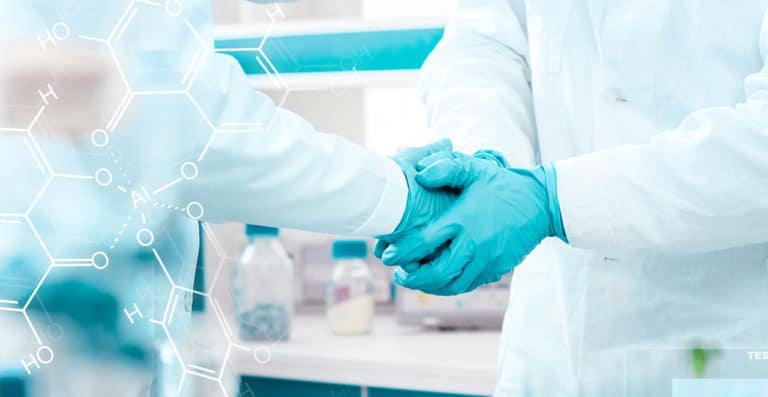
Collaboration in life sciences is not new but there is so much more to accomplish if the industry keeps pace with digital transformation.
“Hyper-collaboration is based on the fundamental belief that it is innovation ecosystems, not individual companies, which will deliver the novel solutions the world is waiting for. Hyper-collaboration means seeing ecosystems for what they are: not just candy stores full of opportunities, but fiercely competitive arenas in which companies fight for the best partners, technologies, and networks to create, build and defend added value.”
[Ecosystem Innovation, Prism First Semester 2017]
Recently, the life sciences industry has participated in an unprecedented amount of collaboration, behavior not often seen in a traditionally competitive sector steeped in secrecy and caution. Life sciences companies are sharing findings and working together; the COVID-19 pandemic demonstrated the ability of the healthcare and life sciences industries to respond to unforeseen, dire needs with unprecedented speed.
Early Symptoms
Independent of the pandemic and in light of disruptive innovations in fields such as artificial intelligence and data governance, the life sciences industry was already opening up. In other words, intense collaboration in life sciences is not new. Many of us simply weren’t aware of it until the world asked the life sciences ecosystem for a fast, effective response to COVID-19 with the assumption that industry giants and governments alike would serve the greater good.
“One hundred years before COVID-19, the world experienced another pandemic. With limited knowledge, it pulled together then to mitigate the spread of influenza and treat the many millions affected. Similarly, during COVID-19, the incredible work of scientists around the globe has seen collaborative projects produce hugely valuable outcomes. From repurposed therapies to novel vaccines, the normal timeline of R&D has been accelerated beyond measure.” — Dr. Steve Arlington, president of The Pistoia Alliance
Deloitte Consulting provides further evidence that there has been a shift under way as life sciences companies of all shapes and sizes move from traditional asset-based partnerships to collaborative, non-asset based R&D partnerships.
In its report titled How Biopharmaceutical Collaborations are Fueling Biomedical Innovation, Deloitte analysts point out that “these new biopharmaceutical collaborations may include three or more parties, often a mix of ecosystem stakeholders including life sciences companies, academia, non-profits, and government entities.”
The statistics are telling:
- Approximately 9,000 new biopharma R&D partnerships were formed between 2005 and 2014 at an annual growth rate of four percent during that 10-year period.
- The 9,000 new biopharmaceutical R&D partnerships formed between 2005 and 2014 are more than double the number formed (approximately 4,000) in the preceding decade (1995-2004).
- The consortium model alone saw a nine-fold increase between 2005 and 2014 versus the prior decade, with 334 new consortia formed, versus just 34 from 1995 to 2004.
Should Supply Chain Professionals be Hyperventilating?
Hyper-collaboration offers many benefits, including shared risk, lower costs, better access to funding and talent, more innovation capacity and improved transparency.
However, there are challenges, including alignment of objectives and incentives, tracking progress across multiple partners, as well as standardizing processes around data collection and logistics. Technologies offering centralized control coupled with decentralized collaboration will offer the greatest advantages.
Supply chain professionals will feel the pressure in these areas:
- Support for the radically extended enterprise. Alliances may not be new to life sciences, but their current scale and complexity are, and this will only grow over time. Partnerships will often comprise multiple players, including biotech, pharma, medical device and health tech companies, as well as academia, payers/providers and even regulators. This means supply chain solutions must be architected to successfully model and manage not only one or two partnerships, but a network of hyper-collaborations.
- Keeping pace with faster innovation. The rate of innovation is accelerating, with digital and data-driven technologies disrupting life sciences companies in novel ways. Designers and developers of supporting systems will have to keep up. That will require adopting composable technology strategies to improve flexibility, ensure fitness-for-purpose and reduce the time it takes to bring new solutions to market.
- Compliance. Focusing on compliance can cause reluctance to collaborate. Indeed, the implementation of new technologies or processes to enable hyper-collaboration is often seen as a prescription for spiraling out of compliance. To that end, many companies in the industry are now investigating blockchain-based platforms to improve collaboration while remaining compliant. Blockchain creates a trusted, auditable, chronological record of relevant data. Every upload, version and comment can be recorded and is immediately memorialized, increasing the security and traceability of documentation.
- Data visualization. Data visualization is the graphical representation of quantitative and qualitative information to aid human understanding. The world we live in offers a data deluge, but it’s accompanied by complex challenges for maximizing the value of that data.
Prognosis
It’s clear that life sciences companies are embracing collaboration. A phenomenon that started well before the pandemic has picked up speed. But there’s still more to accomplish, and much hard work along the way.
To quote Dr. Arlington once more: “In the one hundred years between these two world-changing events, we’ve learned a lot more about the science of pandemics. But we’ve learned far less about the art of collaboration. This must change. Let’s not wait another hundred years to collaborate. You only have to look at the many viable vaccines produced in just ten short months, and the openness we’ve seen around sharing data and knowledge, to understand the value of working together to tackle big problems. Mindsets must change from ‘we should collaborate’ to ‘we must collaborate to save lives’.”
Supply chain professionals will play a critical role in bringing this vision to life.
Learn about other ways in which the life sciences industry is using technology to create value and drive change here.


